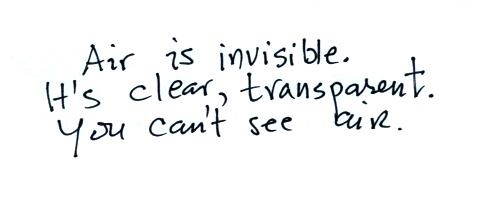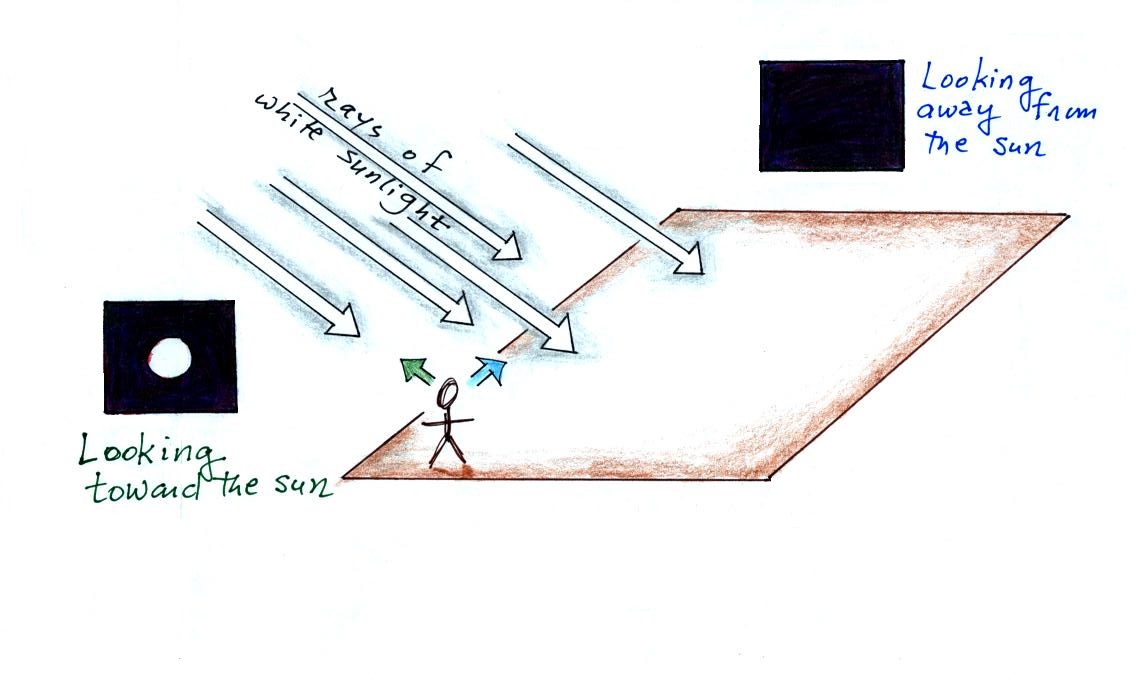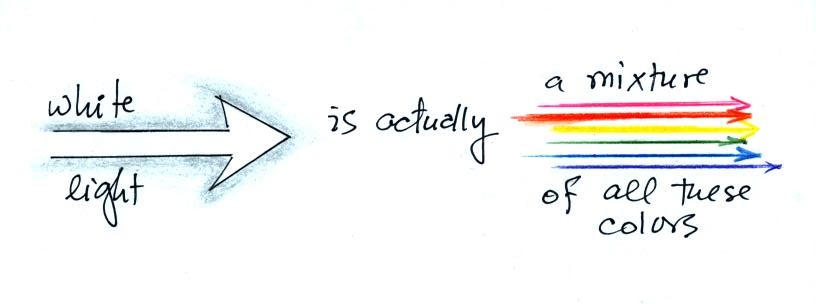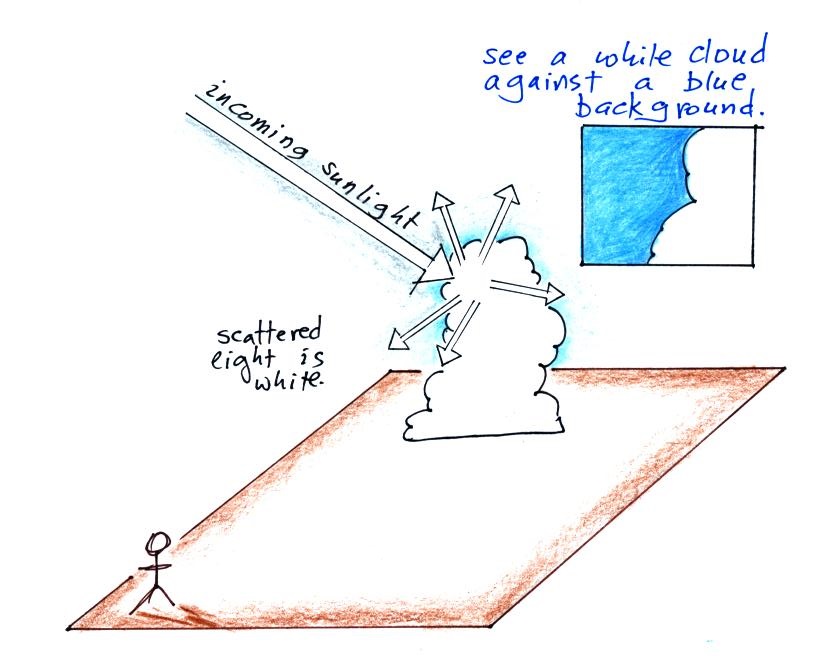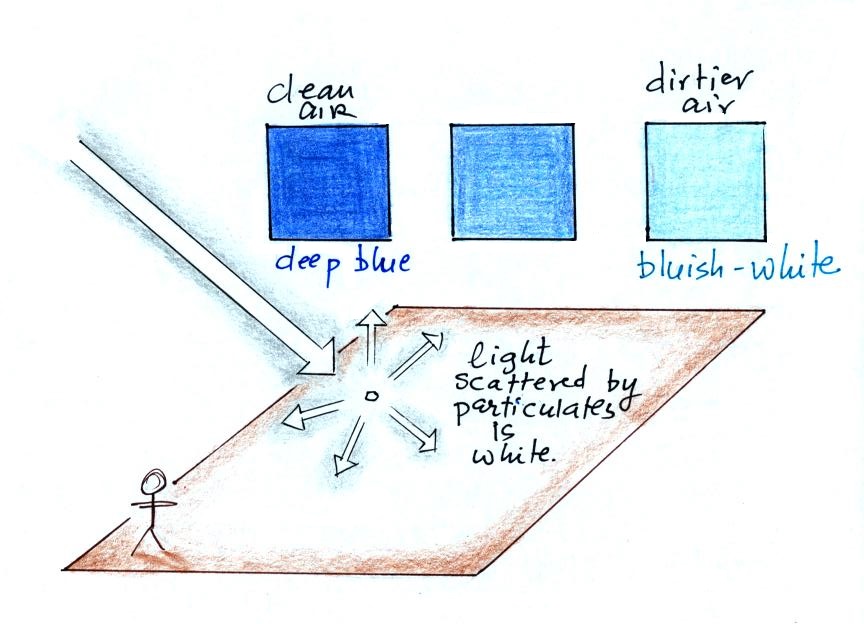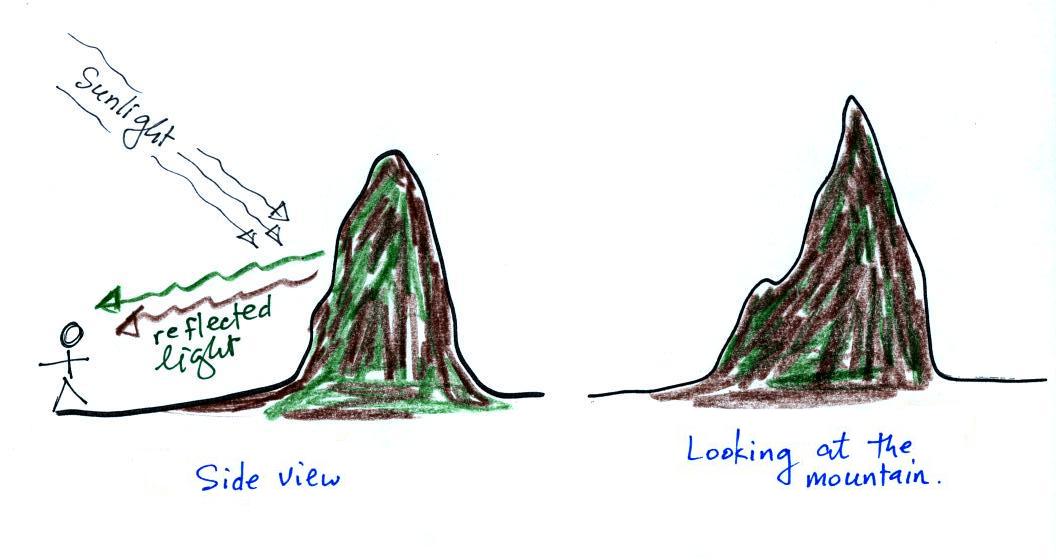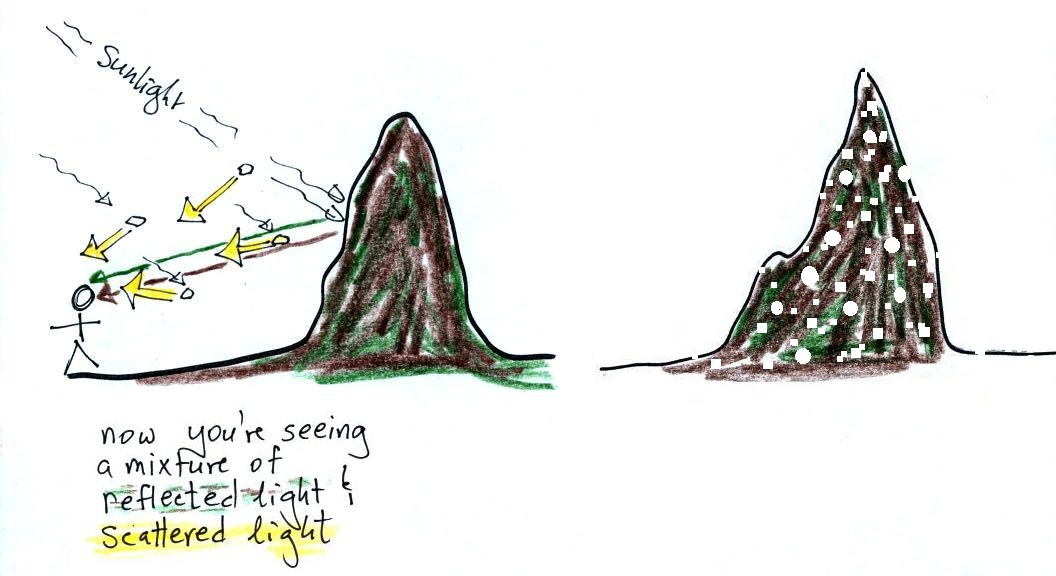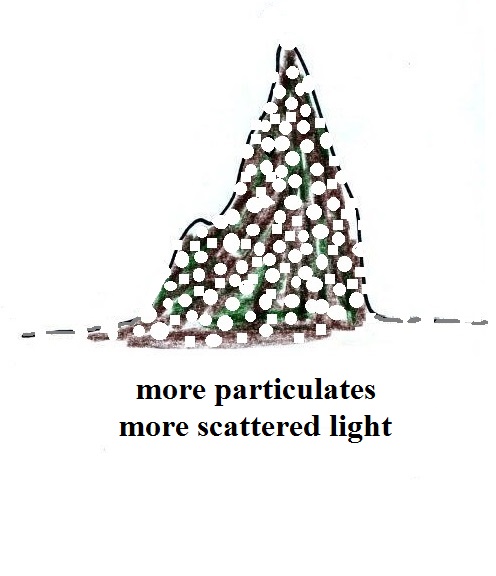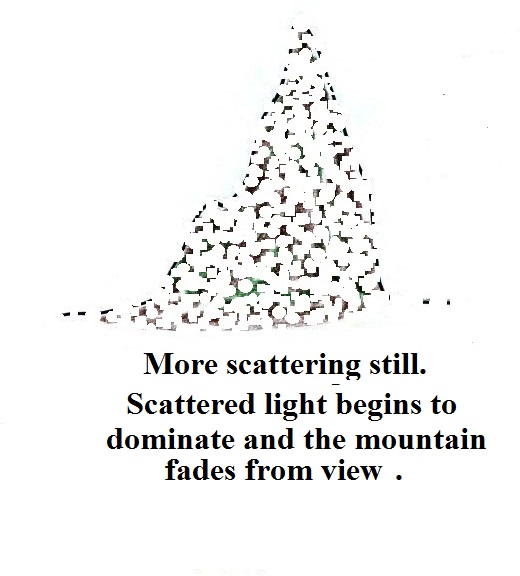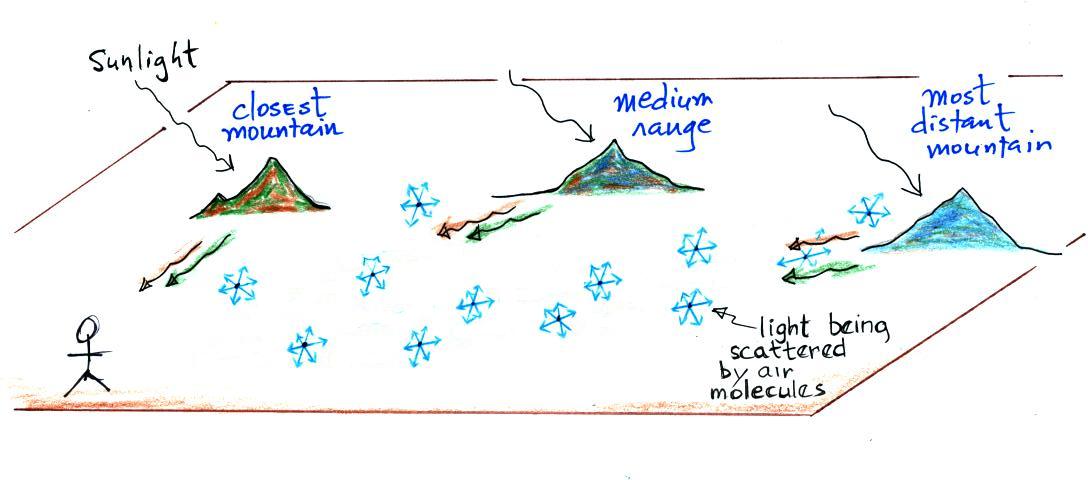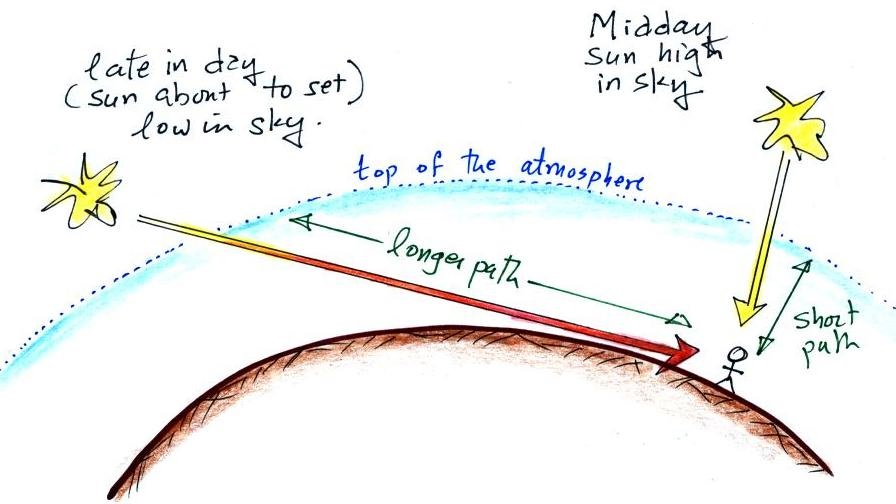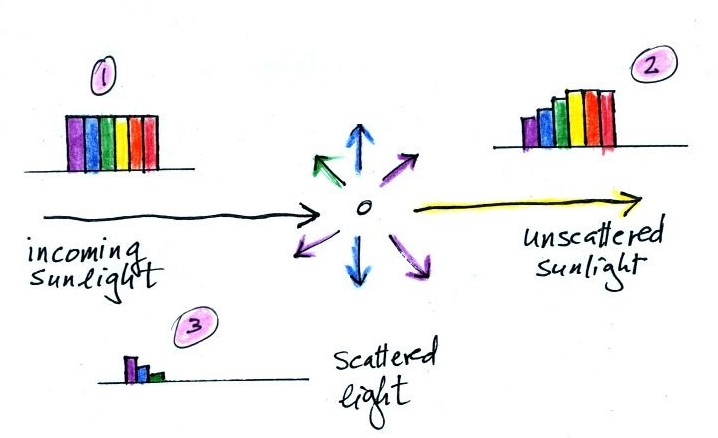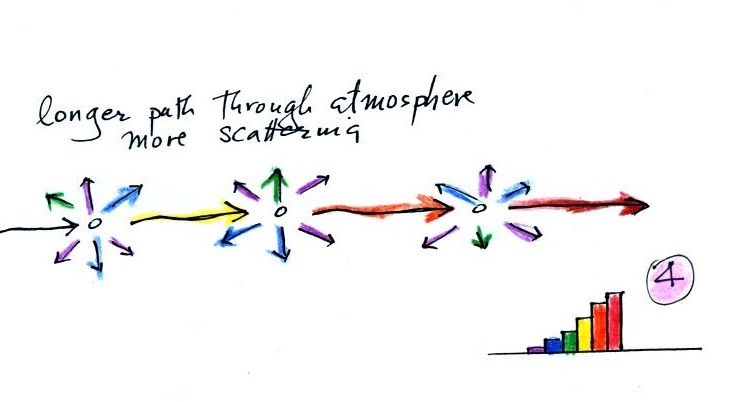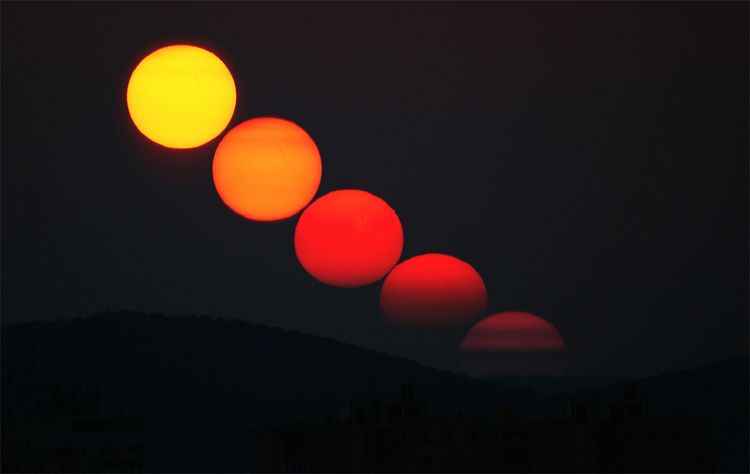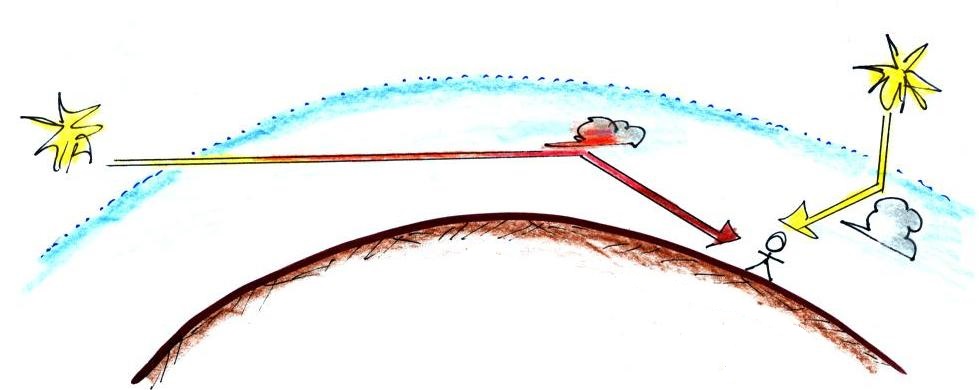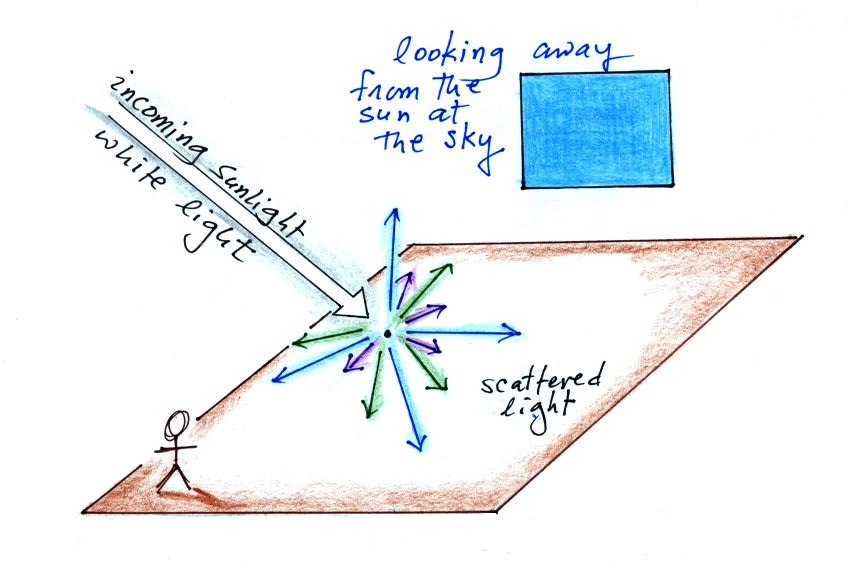
Air molecules
scatter light.
But there's something new. In the class demonstration
we used just a single color of light, red. The incoming
sunlight is white, a mixture of all the colors. Air
molecules don't scatter all the colors equally, they scatter
the shorter wavelengths (violet blue green) in greater amounts
than the longer wavelengths (yellow orange red). This is
depicted above. Actually the figure shows only short
wavelengths being scattered just to keep things simple.
Air molecules scatter light in this way because they are very
small (much smaller than the wavelength of visible light).
